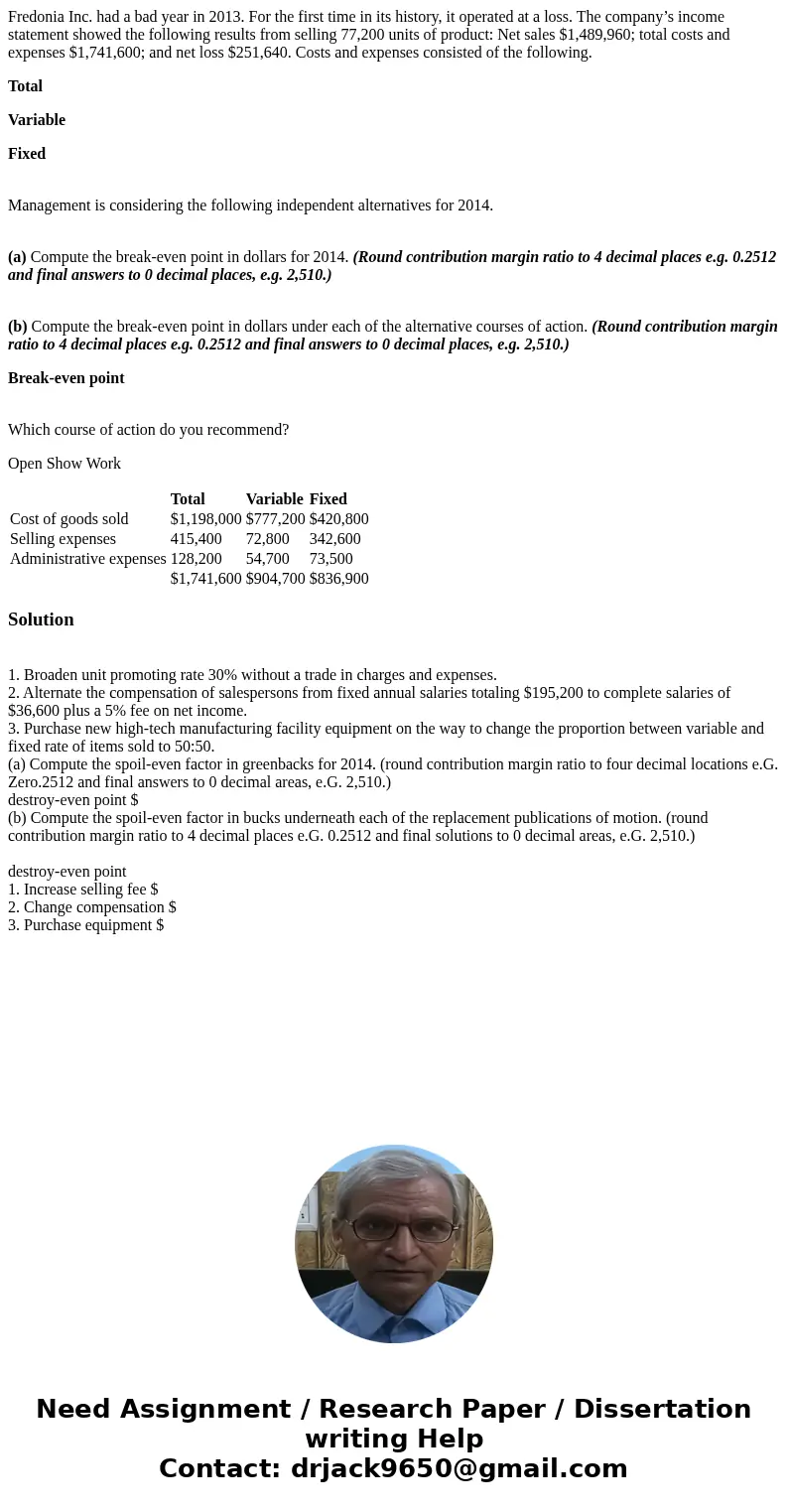Fredonia Inc had a bad year in 2013 For the first time in it
Fredonia Inc. had a bad year in 2013. For the first time in its history, it operated at a loss. The company’s income statement showed the following results from selling 77,200 units of product: Net sales $1,489,960; total costs and expenses $1,741,600; and net loss $251,640. Costs and expenses consisted of the following.
Total
Variable
Fixed
Management is considering the following independent alternatives for 2014.
(a) Compute the break-even point in dollars for 2014. (Round contribution margin ratio to 4 decimal places e.g. 0.2512 and final answers to 0 decimal places, e.g. 2,510.)
(b) Compute the break-even point in dollars under each of the alternative courses of action. (Round contribution margin ratio to 4 decimal places e.g. 0.2512 and final answers to 0 decimal places, e.g. 2,510.)
Break-even point
Which course of action do you recommend?
Open Show Work
| Total | Variable | Fixed | ||||
| Cost of goods sold | $1,198,000 | $777,200 | $420,800 | |||
| Selling expenses | 415,400 | 72,800 | 342,600 | |||
| Administrative expenses | 128,200 | 54,700 | 73,500 | |||
| $1,741,600 | $904,700 | $836,900 |
Solution
1. Broaden unit promoting rate 30% without a trade in charges and expenses.
2. Alternate the compensation of salespersons from fixed annual salaries totaling $195,200 to complete salaries of $36,600 plus a 5% fee on net income.
3. Purchase new high-tech manufacturing facility equipment on the way to change the proportion between variable and fixed rate of items sold to 50:50.
(a) Compute the spoil-even factor in greenbacks for 2014. (round contribution margin ratio to four decimal locations e.G. Zero.2512 and final answers to 0 decimal areas, e.G. 2,510.)
destroy-even point $
(b) Compute the spoil-even factor in bucks underneath each of the replacement publications of motion. (round contribution margin ratio to 4 decimal places e.G. 0.2512 and final solutions to 0 decimal areas, e.G. 2,510.)
destroy-even point
1. Increase selling fee $
2. Change compensation $
3. Purchase equipment $

 Homework Sourse
Homework Sourse